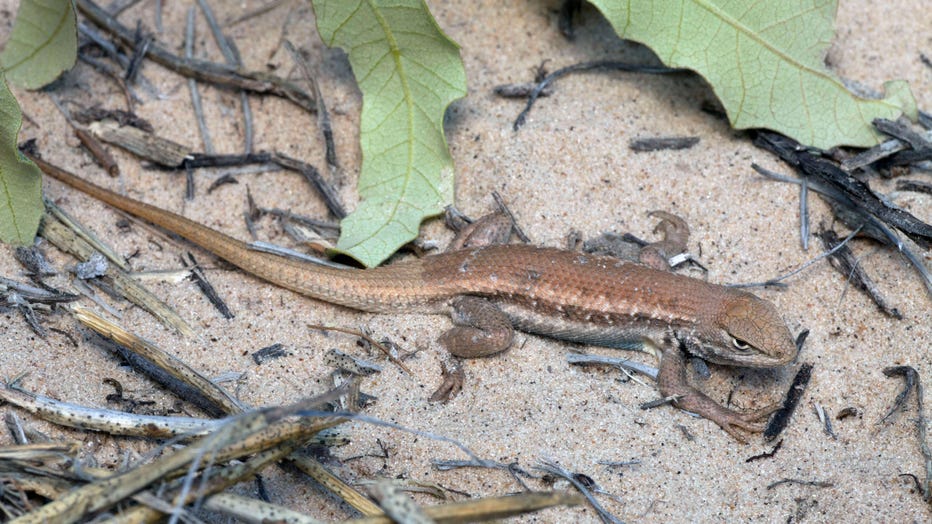Rare lizard found only in major US oil patch proposed as endangered species
The Red List: Endangered species across the globe
Nearly 3,800 animals are critically endangered, according to the International Union for Conservation of Nature (IUCN)'s Red List.
U.S. wildlife managers on Friday proposed federal protections for a rare lizard found only in parts of one of the world's most lucrative oil and natural gas basins.
The U.S. Fish and Wildlife Service said the dunes sagebrush lizard should be listed as an endangered species due to the ongoing threats of energy development, mining and climate change in southeastern New Mexico and West Texas. The agency will be collecting public comments on the proposed listing through Sept. 1.
Environmentalists have been pushing for protections for the reptile for decades, resulting in petitions and lawsuits. There have also been conservation agreements, but some groups have criticized them for not doing enough to protect the lizard's habitat.
The Center for Biological Diversity sued in 2022, accusing the agency of stalling on issuing a decision. The Fish and Wildlife Service, as part of a court-approved agreement, faced a June 29 deadline for making a determination on whether listing was warranted.
"The dunes sagebrush lizard is marvelously adapted for life in extreme environments but it needs our help to survive the oil and gas industry’s destruction," Michael Robinson, with the Center for Biological Diversity, said in a statement. "The Service needs to move quickly to implement these long-overdue protections."
RELATED: Marvel at never-before-seen octopus nursery found off coast of Costa Rica

Dunes Sagebrush Lizard, species Sceloporus arenicolus, Photo: USFWS
Robinson said the 2.5-inch (6.4-centimeter) long lizard has the second smallest range of any lizard in North America.
Biologists aren’t able to say how many lizards might exist because there are so few of them and they’re hard to detect, making precise counts very difficult. However, they note there are fewer lizards detected in areas where there are more oil and gas wells or areas where habitat has been disturbed.
Light brown and spiny, the lizard lives in sand dunes and among shinnery oak, where it feeds on insects and spiders and burrows into the sand for protection from extreme temperatures.
Much of the lizard's remaining habitat has been fragmented, preventing the species from finding mates beyond those already living close by, according to biologists.
Oil and gas operators and ranchers in the Permian Basin have strongly opposed listing the reptile as an endangered species, saying doing so could disrupt businesses and add extra costs. They have argued that oil and gas companies already have spent millions of dollars on conservation efforts, including through voluntary agreements reached with wildlife managers.
Environmentalists first petitioned for the lizard’s protection in 2002, resulting in a 2010 finding by federal officials that the species warranted protection. That prompted an outcry from some members of Congress and communities in both states that rely on oil and gas development for jobs and tax revenue.
Several GOP congressional members sent a letter to officials in the Obama administration asking to delay a final decision.
RELATED: Critically endangered turtle hatchlings found, captured on video
In 2012, federal officials decided not to bestow protections on the reptile. Then-U.S. Interior Secretary Ken Salazar said at the time that the much-anticipated decision over the lizard was based on the "best available science" and because of voluntary conservation agreements in place in New Mexico and Texas.
In New Mexico and Texas, federal officials said around 100 ranchers and 100 oil and gas companies have enrolled in voluntary conservation agreements. The enrollments cover nearly 85% of the lizard’s range within New Mexico.
The Fish and Wildlife Service said Friday that the current determination that a listing was warranted came after "a rigorous review of the best available scientific and commercial information."
The agency also said it would be prudent to set aside habitat for the lizard but did not comment further.

